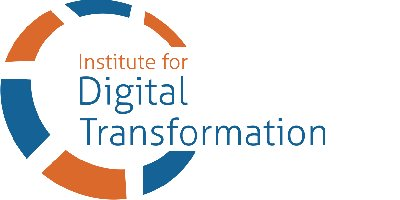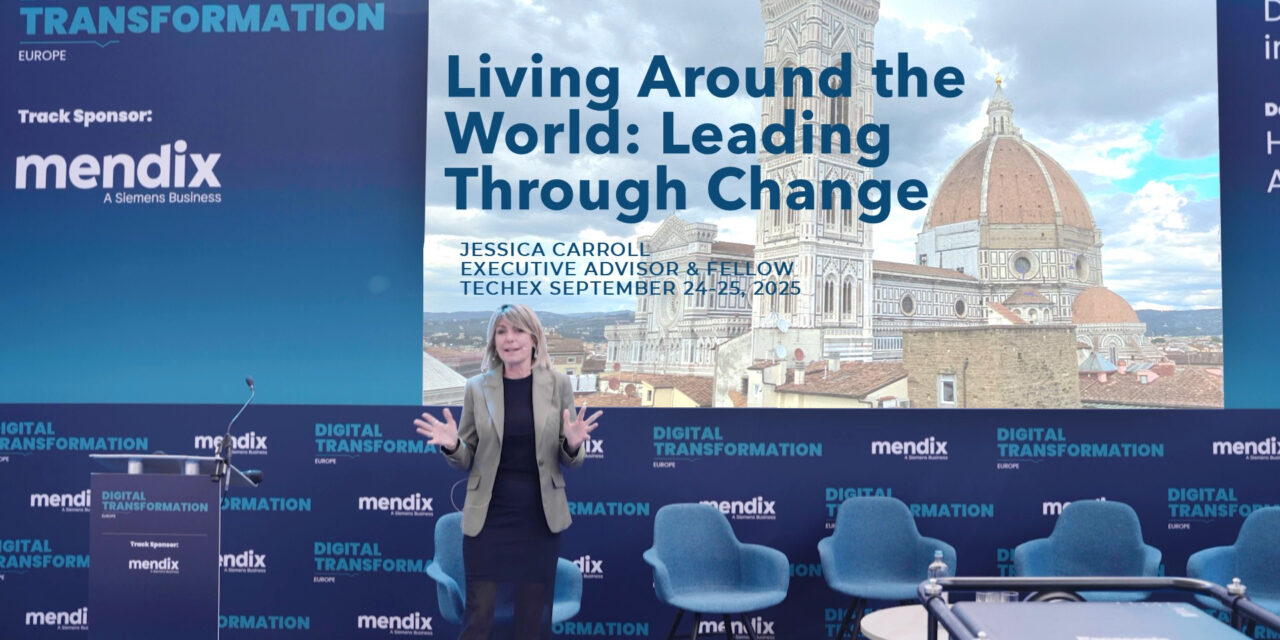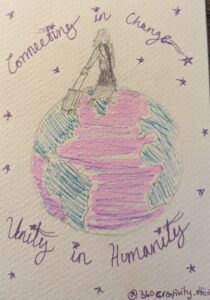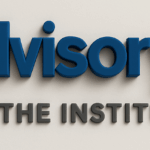As I stepped off the presentation stage at TechEx Amsterdam this September, having just given a keynote on leading through change, one of the attendees came forward, somewhat quietly, to hand me a piece of art she had created real-time during the keynote.
The powerful gesture, distributed so gently, made me draw my breath. She touched me with her gift, not just the clever illustration, but the depth of connection between her art and the message from the talk. What a grand example of the impact of communication.
Digital Transformation was the conference track. There has been so much said on this topic, and I shared with my audience that it’s a bit of a misnomer because what we’re really talking about is Business Transformation with technology as a supportive enabler underneath. Our organizations need to transform because the expectations of the customer have changed, and we must create customer experiences and relationships that sustain and grow beyond a transaction to thrive and grow our organizations.
Living Around the World: A Parallel for Business Transformation
My story of selling my home and most of my possessions a year and a half ago to live around the world was the underlying thread of our discussion for the session. I revealed that I had let go of stability, a safe place to call mine, everything comfortable and familiar in my daily life and instead put myself intentionally, and sometimes awkwardly, into uncomfortable and unfamiliar situations.
Moving to a new city, new country, new continent and embedding myself into the rhythm of a culture different than my own, often having to learn a new language, explore new food, get used to new patterns, forge relationships with new people – and then a few months later, begin that change motion all over again somewhere else, is the adventure I have chosen…for now.
For me, there has been a surreal and supreme realization in the discovery that as different as each place I land may initially appear, there is a common thread of humanity between peoples of all countries, across all continents, languages and cultures, and the willingness to learn how to communicate in new ways creates the pathway to effectively adapting.
Business Transformation is much the same.
Adapt, there is No Normal
Disruption from technology innovations, our place in a global economy, an unpredictable market, an uncomfortableness about our roles – means there is no business “normal.” The world around us is shifting, so how do we successfully manage Business Transformation in the midst of these influences and pressures?
According to Forbes 84% of Digital [Business] Transformation initiatives fail. The top reason noted is resistance to change.
“Even with the right technology, transformation stalls when people aren’t aligned.” — Forbes Technology Council
We need our people, our employees at every level, and our customers, committed to the many fluctuations in the processes, approaches, expectations, and uncomfortable senses that are inevitable as you re-imagine your organization.
I posit that supporting, defining, and executing a Cultural Transformation that encourages a mindset of change is an integral part of your transformation roadmap.
This is necessary because we need to ensure that we are communicating with the intent to empower all stakeholders with the mindset, tools, and personal value of the transformation. Our legacy cultures are not natively designed to manage this.
The “How” Behind a Cultural Transformation
Perhaps you’ve heard many times that people are the backbone to business fortune. But what we don’t often hear is “how” to successfully and sustainably execute that aspiration.
As I relayed to my audience in Amsterdam, it is possible to transform culture through a systematic framework. This is not about painting slogans on your company’s walls; it requires a program that becomes an ongoing conscious set of communications, intentional collaborations, and reflection of how each employee’s daily work tasks and actions can tie to a flexible and customer-centric mindset.
The program that I shared is bound together with 4 Pillars that, when combined, can birth a Cultural Transformation that provides an enduring customer-first culture that is adaptable, relationship oriented, and can catalyze growth:
The 4 Pillars of a Cultural Transformation Framework
- Leadership Alignment
- A Customer-First Mindset
- Employee Engagement
- Customer Engagement
Each of these Pillars has layers of activities, but the common fiber lies in clear company purpose (the sole of your company), an organization structured to create products and services from the lens of the customer, an employee engagement program that brings clarity to each staff member as to how their role uniquely ties to the company’s purpose, and a customer engagement program that continuously enriches the connection between your internal team and the customer’s experience in using your products and services.
The 4 Pillars is a workable framework for developing an organization that is tuned for flexibility, effective communication practices, and sets a solid and reliable base for maneuvering through transformative change.
Back on the Road
A few hours after my keynote I was back on a plane, heading to my temporary “home,” Scotland this month. Disruption and readjustment are my current roadmap, but after all these months the striking lesson I have learned has been about finding structure, amidst the upheaval.
As the plane lifted, I felt contentment. The conversations with conference participants had deeply resonated, reminding me of the profound beauty in human connection. Many shared their struggles—resistance to change, uncertainty within their organizations—and their search for ways to navigate it, both emotionally and tactically.
We have more commonality than we realize; we simply need the right parameters, a strategic and deliberate approach, to cross perceived barriers.
Just like @360creativity.official, who created the lovely artwork for me during the presentation, and whose gift served as a powerful metaphor: when connection is intentional, it becomes an enduring inspiration sparking personal and business momentum.
For more insights on how to execute the Cultural Transformation Framework contact us at Institute or drop me a personal note.
Tag/s:AdvisoryBusiness TransformationCustomer ExperienceDigital EnterpriseOrganizational ChangePersonal Development






